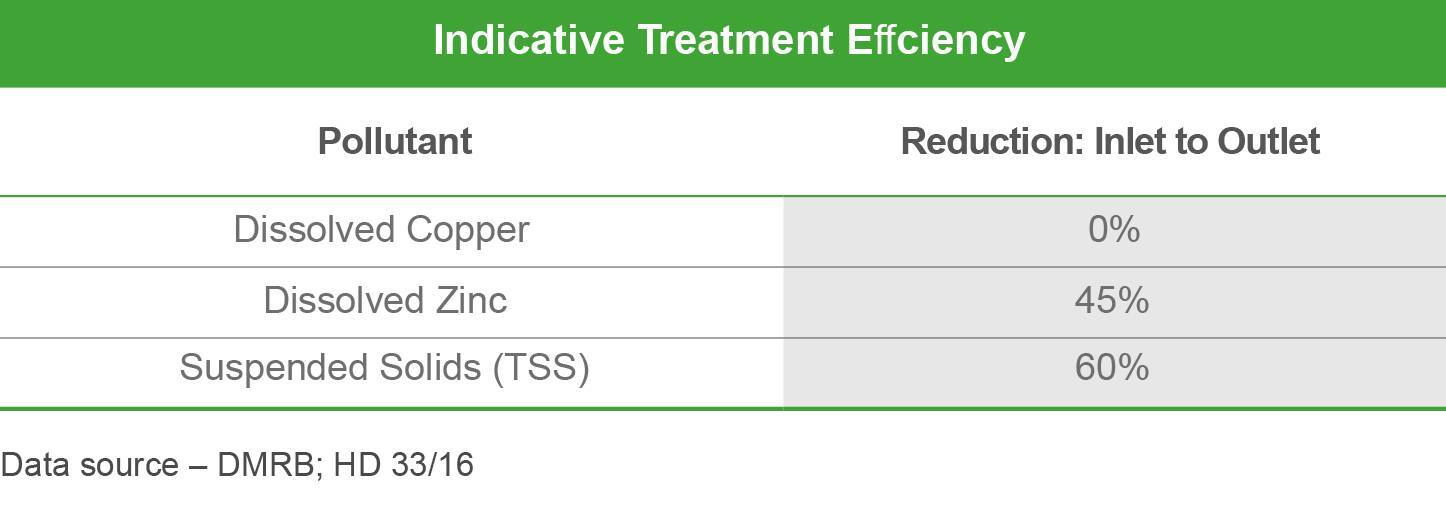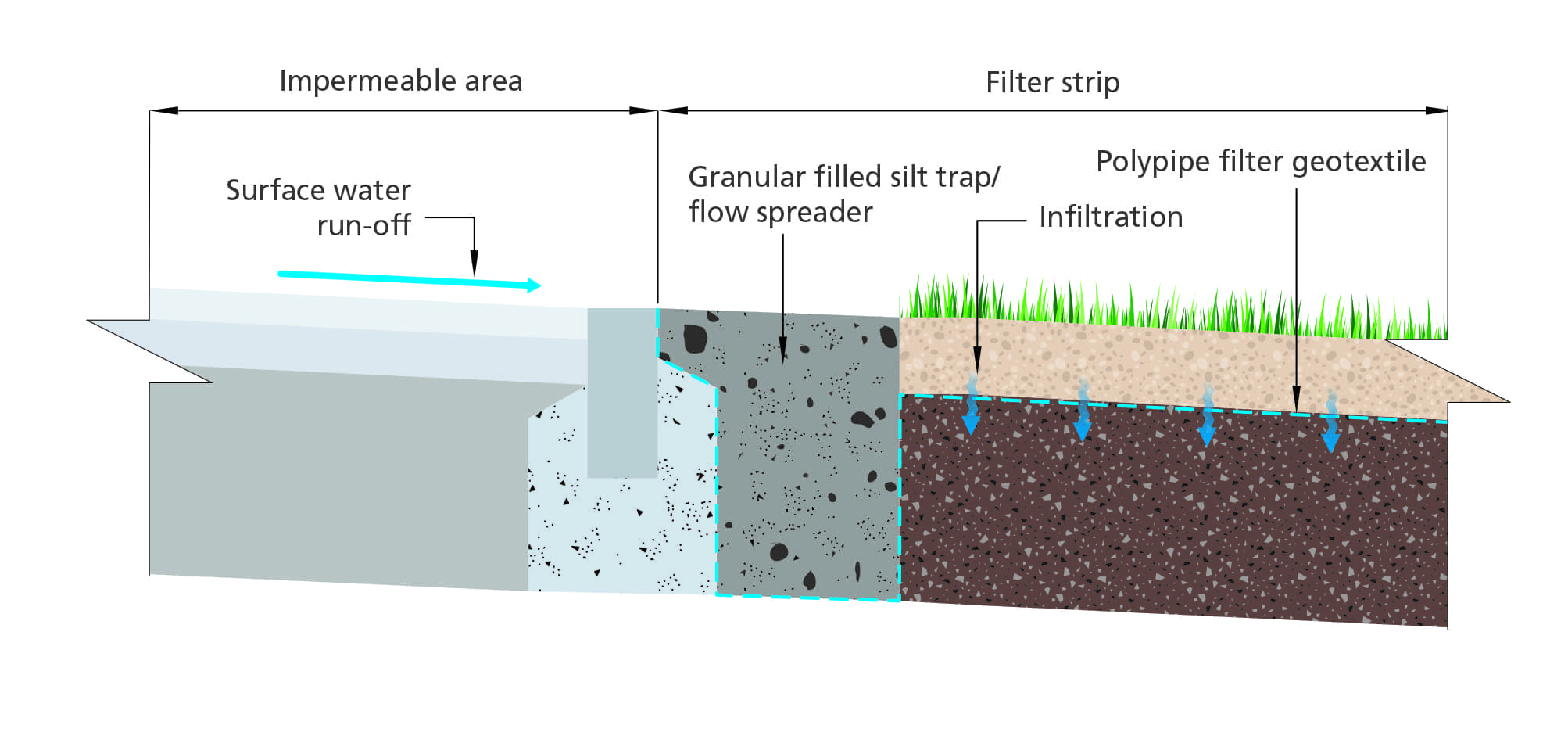Filter Strips - Technical Information

Polypipe GI solution
Filter strips alone can make a valuable contribution to Green Infrastructure creating conveyance and storage at source. Conventional SuDS designs can be enhanced by the use of Polypipe Geotextiles.
Hydrocarbon concentrations within surface water infiltrating through the Permafilter is limited to a maximum 5 parts per million (ppm) [5mg/l].*
It should be further noted that Permafilter encourages the formation of a biofilm, that actively biodegrades retained hydrocarbons.
*Based on an oil load of 0.6 l/m² (600ml/m²)

Filter strips may be designed to encourage infiltration into the underlying soils through the use of shallow gradients.
While significant infiltration of surface water would not normally be considered possible for this type of SuDS element, filter strips can potentially make a significant contribution to interception storage.
Design water flow velocities should typically be restricted below 1.5m/s to prevent erosion, however, it should be noted that lower velocities would be required to achieve efficient levels of water treatment.
Additional water storage can be created within the filler media by substitution of some of the material in the granular filled silt trap/flow spreader with Ridgidrain or Polystorm.

Optional granular filled silt trap and flow spreader trench (SuDS manual (C753) Section 15, Filter Strips, Figure 15.2)
Filter Strips – enhancing performance
Filter Strips can also be effective as a combined SuDS solution with a filter drain and/or silt trap. The silt trap is located upstream of the Filter Strip, isolating silt and other particles before allowing the pre-treated water to enter the Filter Strip. Silt traps encourage settlement in their base and buckets, preventing ingress into sustainable drainage systems. Filter drains sit downstream of the Filter Strip, and receive lateral treated inflow which can then be stored and attenuated at a controlled rate.
Green infrastructure X


